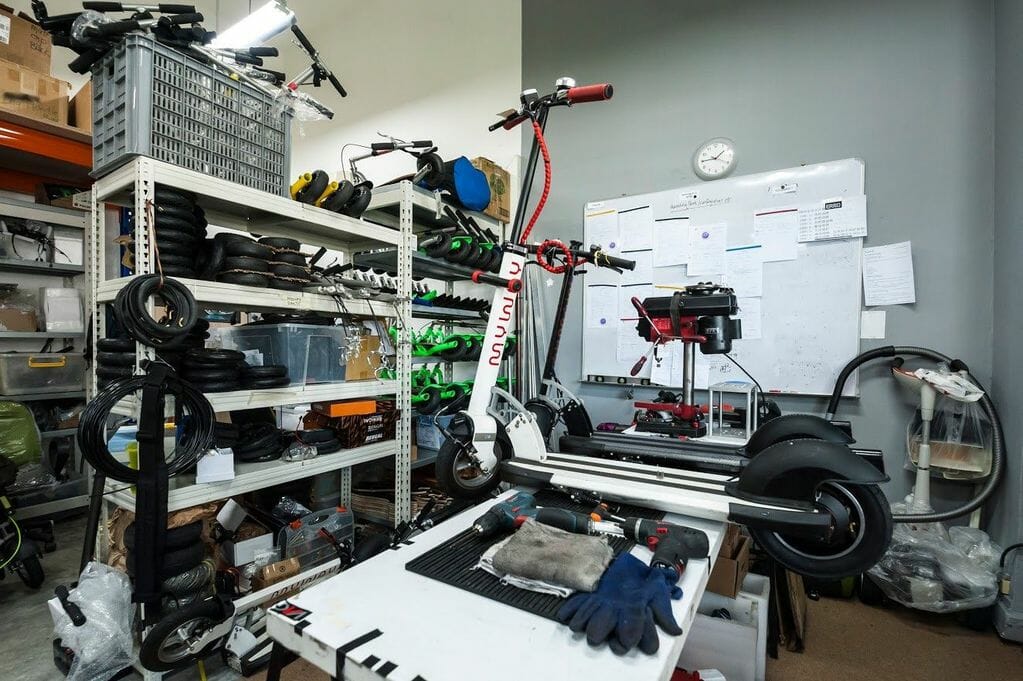
Electric Scooter Maintenance. If you don’t maintain your scooter correctly, it can result in breakages.
When these happen, higher costs are a certainty. So, in this guide, we’ll look at how to maintain electric scooter parts and why it’s essential.
Electric scooters are a lot of fun but they aren’t cheap. They do not need much maintenance and upkeep, they do need a little care. Easy electric scooter maintenance is easy with these tips. You can keep your scooter going strong and problem free for years.
With a few minutes of your time, you can extend the life of your electric scooter and it’s batteries. By skipping care and maintenance you leave yourself open to breakdown or premature battery failure. Let’s look at how to take care of your electric scooter.
Why is Regular Electric Scooter Maintenance so Important?

Regular maintenance can prolong the life of your electric scooter and ensure it is always ready for your next ride.
Preemptive weekly check-ups are the best way to stop any potential defects and problems,
and notice a failing part in time before it becomes completely defunct.
Replacing a faulty brake cable before it wears off can save you from a potential accident if the brakes go bust in the middle of a ride. Old, or uninflated tires, on the other hand, can cause a lot of trouble, especially once their threads wear off.
Additionally, regular preemptive maintenance will come out much cheaper than reactionary servicing in the long run. Faulty parts can put a greater burden on functioning ones, which can lead to more problems overall, and more parts needing a replacement.
You will also get improved performance
from a well-preserved scooter, and this is not even a debate. A healthy battery has a much longer range than an overcooked one. New, well-inflated tires are much quicker than old ones. And don’t let us even start with faulty suspensions and the effect they have on the ride quality.
And, at the end of the day, your scooter will look much better if it’s taken care of, cleaned, and in its best shape.
Like anything with moving parts, it’s important to run an eye over your e-scooter every now and then to ensure it keeps performing as the miles rack up. Simple things like under-inflated tyres and a dirt build up around the wheels and bearings can cause a reduction in electric range and erratic handling.
“As with a bike, we recommend performing a quick check before each ride to ensure that the e-scooter is safe to ride,” says David McKinven. “This will include a visual check of frame and wheels for damage and a physical check of the brakes to ensure they are safe.
“We also suggest regular servicing based on your mileage and amount of use, and at a minimum, your e-scooter should be checked over and adjusted every 600 – 800 miles. This can be completed at any of our stores nationwide or by any good registered dealers or stockist,” he says.
Clean Your Scooter Regularly
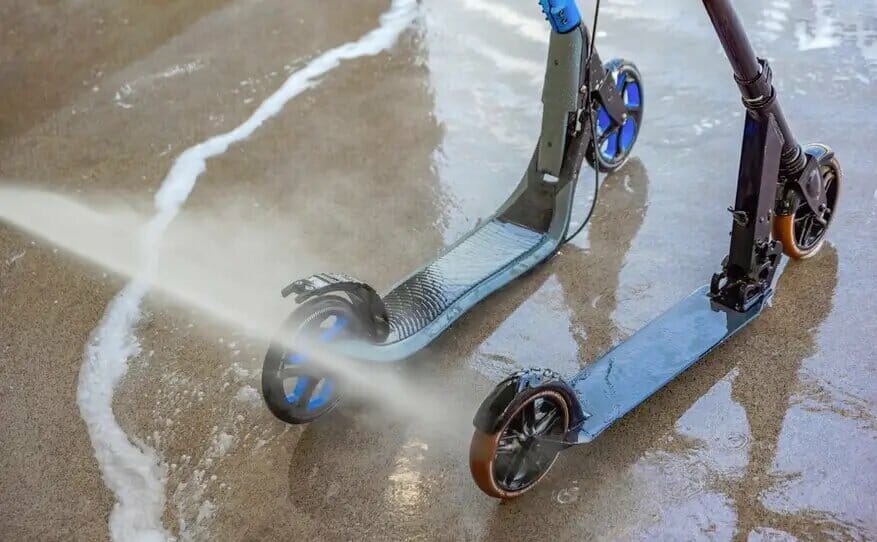
Cleaning your electric scooter is the first step. Do not hose down your scooter while it is outside. Water and electricity typically don’t mix. Wipe down your scooter with a moist rag or wet sponge to clean it. You can use some all-purpose cleaner spray if you need a bit extra. On your scooter, mist a little bit and wipe it off. Continue until the scooter is thoroughly clean. Paper towels can be used as rags.
The idea is to wipe your scooter clean without soaking it more than necessary or spilling water within the battery or circuits. In the video shown below, an electric scooter is cleaned.
How To Maintain An Electric Scooter
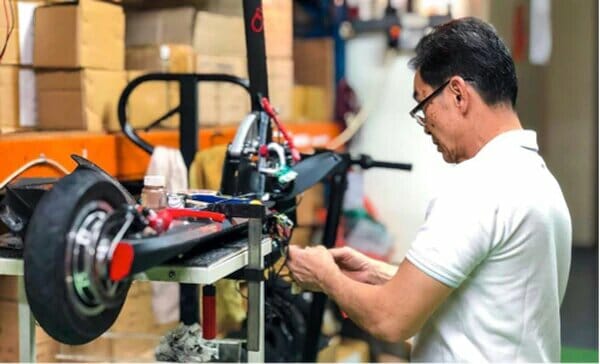
Before we get to the nitty gritty of e-scooter maintenance, it’s worth noting that the best protection against potential faults is simply to keep the scooter clean. As a happy and content owner you should be prepared to roll your sleeves up every now and then and carry out a general scrub down as it becomes dirty. This sounds simple but since the vehicles are electric, it’s not just a case of dowsing it with a pressure washer, as this could fry the batteries or cause other damage.
Instead, use a damp microfibre cloth to take care of grips, handlebars and any sort of trip computer the e-scooter might boast. A paintbrush or old toothbrush is also good to loosen up stubborn dirt, especially in those tricky to reach areas, such as the rear between the rear wheel and a foot brake.
If the dirt is proving hard to shift, try a very diluted solution of water and washing up liquid in a spray bottle and apply small amounts before wiping away. Regular cleaning should fend off most issues, but below is our list of must-do maintenance to keep your e-scooter in tip-top condition.
Electric Scooter Battery Regular Maintenance
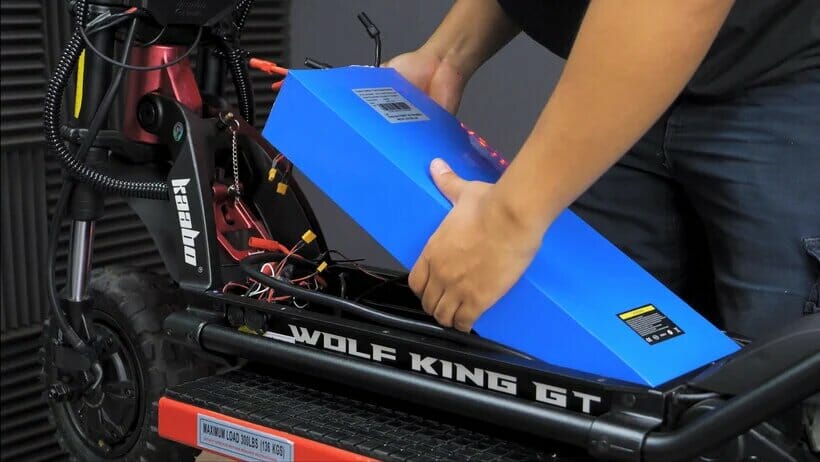
The battery on your electric scooter is probably the most important part. All of our scooters feature lithium-ion batteries which are high performance, low weight and physically much smaller than comparable lead-acid batteries of the past. Advances in battery technology mean that modern mobile batteries are able to provide better efficiency and longer lasting power than ever before.
All batteries, however, have a life-cycle and when you notice a decreased ability to provide lasting charges this means your battery’s life is coming to an end. However, we have the following advice to maximise the life of your electric scooter battery:
Don’t fully deplete the charge from the battery; keep it topped up to at around 90% and prevent overcharging from KERS (the scooter’s Kinetic Energy Recovery System, which converts your forward momentum to battery charge under breaking). For the longest lifespan, research shows it’s best to store your scooter at around 90% charge.
Most Li-Batteries have a lifecycle of 500-1000 charge cycles. A charge cycle involves taking the battery from 100%-0%-100% full. Keeping it topped up reduces the number of full cycles.
The daily operating temperature of the scooter will have an effect on its life. Extreme conditions outside of the manufacturers specifications may cause battery health to suffer adversely.
Maintenance of Main Parts of An Electric Scooter – Important to do Regular
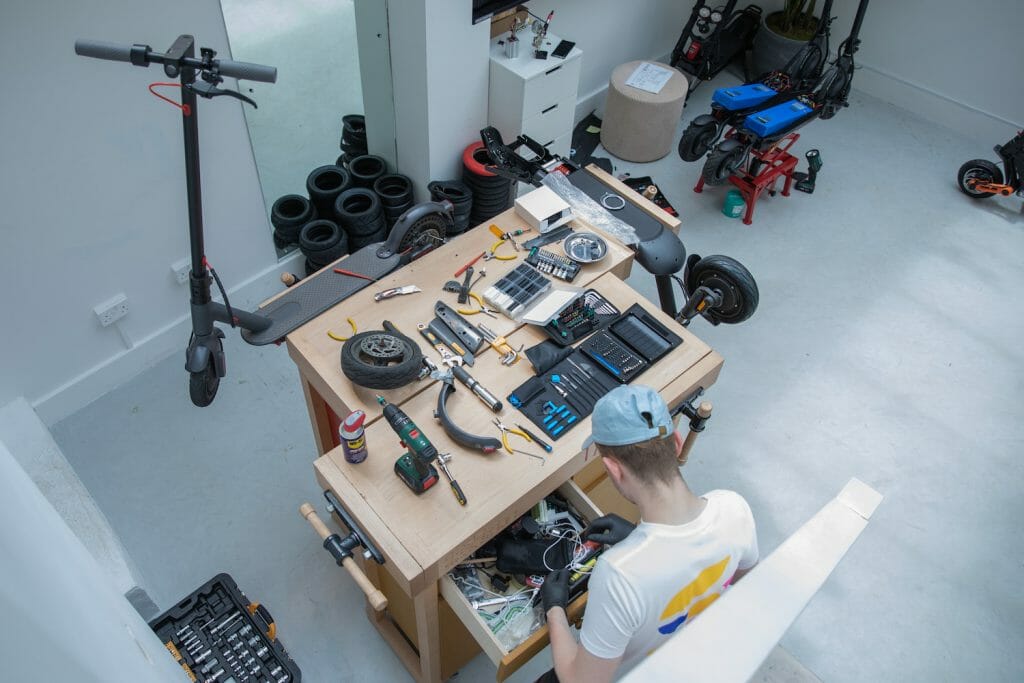
In their most basic form, an electric scooter has similar parts to mechanical scooters, with one significant difference; electrics. TIf you want to learn how to perform e-scooter maintenance, it’s essential to know the role of each component.
Brakes
Brakes are essential for road safety because they enable you to slow the speed of your scooter and stop it in an emergency. Much like your car brakes, an electric scooter is a safety hazard if it doesn’t have a supportive braking system.
Many scooters have two sets of brakes to ensure complete safety. While electric brakes are easier to maintain, mechanical brakes provide more strength, so manufacturers usually combine them to make a high-powered yet reliable scooter.
Batteries
As your car needs petrol to run, your electric scooter requires batteries to power the motor, lights and other electrical components. If you opt for a budget scooter, the manufacturer might use a lead iron battery, but most choose lithium-ion cells that merge to form a battery pack.
The capacity of your battery determines how long each charge will last and whether your battery can provide energy for higher power motors.
In electric scooters, battery capacity is measured by Wh (watt-hours), ranging between 250 – 3000Wh.
Tyres
Tyres provide the traction to brake in an emergency, but they’re also necessary for your scooter to run. Just as a flat tyre would make riding a bike or driving a car incredibly difficult, the health of your scooter depends on a strong set of tyres.
Grips
Grip refers to how the contact surface of a tyre meets the road. In simple terms, the more grip your tyres offer, the safer your journey will be. Car manufacturers usually make specialist winter tyres because standard grips don’t provide proper support during the winter months.
You should pay special attention to your scooter tyres and check if your model offers enough grip for rain and icy conditions.
Motor
While the battery provides power to the motor, the motor, in return, keeps your electric scooter moving. High-powered motors are usually seen in performance scooters because they can offer higher speed levels, but these electric scooters often consume more energy.
Most people try to find a happy medium between power and efficiency. But, with some scooters offering high-capacity batteries, they can provide you with hours of usage while enjoying the experience of a powerful motor.
Frame
The frame supports each component of your scooter, so if it becomes damaged in any way, the handlebars, deck, wheels and electrical components will feel the effects.
Take Care of Your Electric Scooters
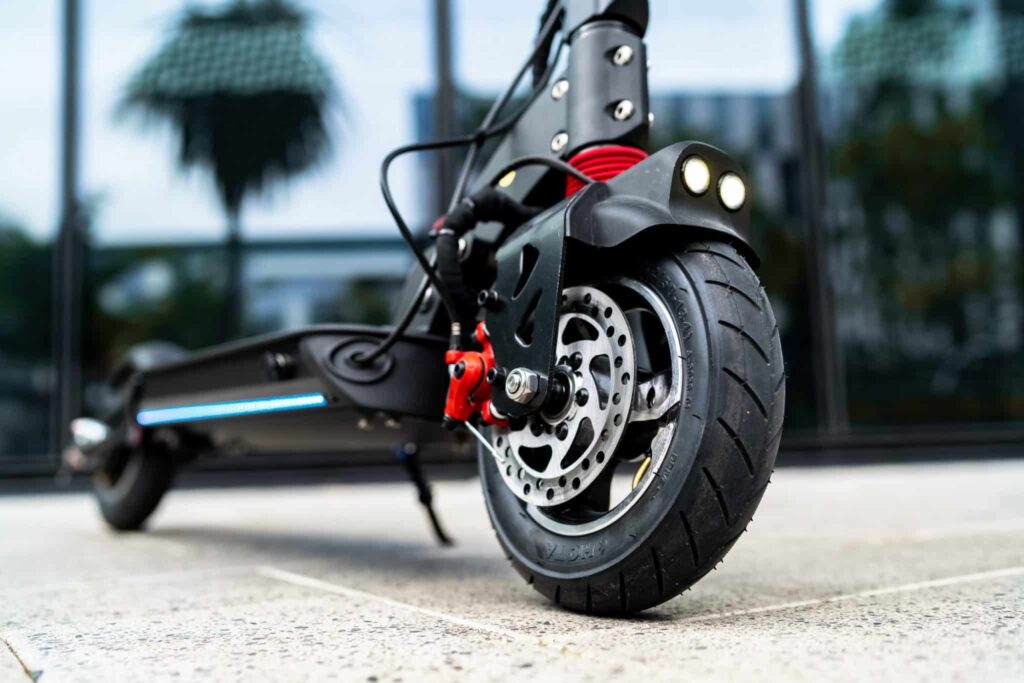
When it comes to electric scooter products, numerous factors can damage each models life cycle. Everything from bad charging cycles to tyres not having the correct pressure and your riding style can cause damage.
But with some basic tools and the ability to recognise potential faults, you’ll be able to save a lot of money.
Our electric scooter maintenance guide will help you learn the components of your electric scooter and show you how to fix minor faults.
Clean Your Scooter Regularly
It’s incredible how something as simple as cleaning your electric scooter can protect it from future breakages. But washing the frame and cleaning each component means your scooter will be less likely to rust, and vital parts can continue to function.
How to Clean the Frame
All you need to clean the frame of your scooter is warm water, dish soap and a cloth. Try to drain the cloth as much as possible and wipe the mechanical components, including the kickstand, lights, handlebars and brakes.
Once you finish wiping down the scooter, grab another bucket of clean water and use a different cloth to remove any excess dirt. Moisture is a breeding ground for rust, so it’s best to make sure you dry the scooter.
Washing the Wheels
Both your front and the rear wheel will see the most dirt because they’re in direct contact with the surface you’re riding on. For this reason, you should use a sponge to remove the grime, but don’t include any soap.
Clean and Degrease the Chain
You’ll need water, a brush and eco-wash to clean the chain of your scooter. Place a small amount of eco wash into a dish and use the brush to scrub the chain. Once complete, you can use clean water to remove any excess dirt.
Next, it’s time to dry the chain and add some lubricant. You only need a small amount of lubricant, but we’d recommend using a specialist brand and not something like Vaseline.
Check Your Tyres Regularly
We cannot stress enough how important it is to check your tyres regularly. Under-inflated tyres will make it difficult to control your scooter, and you’ll be highly susceptible to bumps in the road. When scooter tyres are correctly inflated, they’ll be able to handle rough terrain, and punctures won’t be an issue.
Your user manual will tell you how inflated your tyres should be, and you can use a bike pump to get them to the right level.
Some scooters have solid tyres, but you should continually monitor them because weakening rubber can cause it to wear down quickly, which will lead to early replacement costs.
Be Wary of the Weather
One of the golden rules of scooter maintenance is to use your common sense. It’s never advisable to ride in poor weather, but if you commute, then you probably don’t have a choice. The most important aspect of your scooter is its IP rating if you plan to use it in the rain.
The IP rating refers to how waterproof your scooter is, and the higher the second number is, the more likely it is that your scooter will repel moisture and reduce the risk of damage.
For example, an IP54 signifies an adequate level of protection, but anything above IP56 means your scooter can withstand jets of water from all directions.
While IP ratings can help you determine how safe your scooter will be in the rain or snow, we should still mention that maintaining your electric scooter is essential for avoiding accidents.
Don’t Let Your Electric Scooter Battery Run Out
Although it may be tempting to run your scooter’s batteries until they are completely flat, it can actually adversely effect the lifespan of the lithium-ion cells that make up modern battery packs.
“Avoid fully depleting the charge from the battery; keep it topped up to at around 90% and prevent overcharging from KERS – the scooter’s Kinetic Energy Recovery System, which converts your forward momentum to battery charge under braking. For the longest lifespan, research shows it’s best to store your scooter at around 90% charge,” says David McKinven.
“Most Li-Batteries have a lifecycle of 500-1000 charge cycles. A charge cycle involves taking the battery from 100%-0%-100% full. Keeping it topped up reduces the number of full cycles,” he adds.
Service The Brakes
Electric scooter brakes are essential for protecting others on the road and being able to stop in time. Your scooter could have electric brakes, disc brakes, band brakes or other types, but it doesn’t matter.
The important thing is that you know how to monitor and service your brakes.
Check your wheels and brake elements.
Put your scooter on a platform, and evaluate how easily the wheels spin. You should look at each element, including the brake pads, shoes and brake wire.
Fine-tune your brakes
You’ll need different tools for your brake pads and shoes. Allen keys will fit the pads, but you should use a small key for the shoes.
Have Patience
Be patient when turning your brakes. It takes a lot of time and effort, so some people find it’s easier to ask a mechanic to do the work.
How Long Does a Electric Scooter Battery Last?
An electric scooter battery can last several years if properly cared for. Proper care can extend the life. Several factors come into play. Most batteries are good for a given number of charge and discharge cycles. If you use your scooter more, this puts more cycles on the batteries, which will reduce their life span. You will notice over time that you don’t get as much range as you did when the batteries were new. When the range gets too short, it’s time for new batteries.
Why Won’t My Electric Scooter Hold a Charge?
There are many reasons your scooter may not hold a charge. Did the batteries overheat or get overcharged or discharged too far? These will all damage the batteries and make them no longer work.
Is the battery charger working? There should be some indicator that charging is occurring. Usually by flashing color coded lights on the charger or battery.
Is there damage to the scooter wiring or electronics? Is there is a frayed wire or short circuit somewhere, the battery charger may not function.
Why is My Electric Scooter Not Working?
Is your battery charged? If not the battery needs to be charged. Make sure the battery is fully plugged in. Check any visible wiring for frayed wires. Does the scooter power up when you plug in the battery but it just doesn’t have propulsion? Read the manual that came with the scooter for resetting it. Check the manual for any fuses or circuit breakers that might be present.
The below video gives some trouble shooting examples for a Razor 100 scooter. Much of it applies to any electric scooter.
How Do You Check an Electric Scooter Battery?
You can use a multi-meter to test the battery voltage. You can use the voltage measurement on the multi-meter across the battery terminals to see what voltage the charged battery has. It should be the same as the voltage rating.
You can also check the voltage under load by having someone stand on the scooter and advance it quickly to full throttle. Do not hold it at full throttle any longer than necessary for taking the measurement. Holding the scooter motor and battery in a stalled condition will cause them to overheat. The voltage of a fully charged battery should not drop more than 1-2 volts from it’s unloaded value.
If you are not familiar with using a multi-meter, you should seek out help from someone who has before. Some electric scooters have very high power batteries that can cause electrical shock if you are not careful.
What Tools Do You Need for Electric Scooter Maintenance?
You don’t need a whole trunk of tools to properly maintain your scooter. For the screws and frame check-ups, you would need:
- a set of Allen keys
- two screwdrivers, one with a slot head and one with a Philips head
- a set of wrench tools (most scooters use screws with sizes 8mm – 19mm)
- pliers, as they often come in handy
For cleaning, it’s best to always have a dry microfiber towel that you use for your scooter only. Wash this towel at least once a week, as it will collect a lot of dirt on it, and use it gently. If you do a soap wash, you can use any type of sponge with a metal cleaning solution.
Where Should You Store Your Electric Scooter?
The best places to store your scooter are closed dry storage rooms, like a pantry, a closed garage, or a well-isolated attic.
Leaving your scooter outside, especially in the winter, can lead to corrosion from the humidity in the weather, and a lot of dirt and dust intake from all the wind.
If you don’t have the option to keep your scooter indoors, you can leave it out on the balcony and cover it whole. You can use any nylon cover, or you can buy a specialized zipped bag that can fit your scooter folded inside
How Often Should You Check Up on Your Electric Scooter?
Check-ups for loose bolts and screws should be done once every one or two weeks. You should also test the brakes before each ride so you know they function well before you ride at high speeds.
Light scooter cleaning should be done after each ride in the winter, and at least once every two rides in the summer. A deep clean, on the other hand, is best done every month or two, or as many times as your schedule allows.
At the end of the day, you shouldn’t bind yourself to these timetables too much. If you notice any dirt stuck in the wheels, or on the deck, just take your towel and scrub it off.
How To Prolong Your Electric Scooter Battery Life?
The three best ways to prolong your scooter’s battery life are to:
- use appropriate charger
- try to keep the battery between 15% and 90%
- don’t use the scooter in extreme weather conditions (below 0°C, or above 45°C)
Q: Does electric scooter require maintenance?
A: One of the best features about electric scooters is that they require little maintenance. However, there are a few things that will help keep your scooter running smoothly.
Q: What is the lifespan of an electric scooter?
A: On average, e-scooters in a ride-share fleet last for 9 to 18 months, while personal ones last for up to 3 years. The efficiency of a personal e-scooter reduces after the first 2 years, but with proper care and maintenance, you’ll still be cruising your scooter for up to 3 years or even more.
Q: How do you maintain an Escooter?
A: How to take care of your scooter:
Read the manual.
Ask your dealer about the best way to care for your battery.
Protect your scooter from the elements.
Clean your mobility scooter.
Do a quick surface clean.
Check the air pressure on your tires and fill them if they need it.
Check up on your battery.
Examine your tire treads.
Q: Should I charge my electric scooter after every ride?
A: Fully draining the batteries of an electric scooter causes damage and makes their lifespan shorter. This is why it is advised to fully charge the device every time, which will prevent it from being completely drained by the end of the ride
Q: Is electric scooter high maintenance?
A: What we’re trying to say is that you should not worry about the maintenance of electric scooters since their cost is far less than petrol vehicles. Now that you’ve understood the cost-breakup, listed below are a few easy tips to maintain your electric scooter and ensure efficient performance.
Q: What are the problems with electric scooters?
A: Surprisingly, dead batteries are a common issue with electric scooters. This can be a result of a defective battery, improper charging, extremely cold temperature, or a slowly degrading battery capacity. Take note that a dead battery is different from a low battery.
Q: Can I leave my electric scooter on charge all night?
A: Yes, all the e-scooters and e-bikes that we sell have an automatic cut off in the battery management system that will stop charging when the battery is full. We recommend keeping your battery charged up at every opportunity.
Q: Do electric scooters overheat?
A: When an electric scooter battery is dying, it often will cause the device to overheat. If you notice your scooter getting too hot and not turning on (even though it’s plugged in and charged), this may be a sign that the battery needs replacement.
Q: How far can an electric scooter go with full battery?
A: An electric scooter can cover between 35-40 miles on average on one full charge. Nevertheless, that depends on several factors.
Q: Can we travel long distance with electric scooter?
A: This extended range means that riders can travel further without worrying about running out of power, making them a great choice for commuting or traveling long distances. Most e-scooters have a range of 10 miles–25 miles, so a long-range e-scooter can be considered an upgrade.
Q: Do electric scooters get damaged by rain?
A: Yes, you can ride electric scooters in the light rain because most are somewhat water-resistant and splash-resistant but not completely waterproof. If you ride the scooter through extreme conditions or submerge it, then the scooter will be rendered inoperable.
Q: Should I drain my scooter battery before charging?
A: Rule 1 – Just Charge It
Avoid totally depleting your scooter’s battery before charging. Always make sure it is minimally 10% charged. If you charge your electric scooter’s battery regularly, it will significantly prolong its life.
Q: Do electric scooters have a speed limit?
A: Some electric scooters have speed limit controllers that will ensure you don’t travel faster than a certain speed, usually up to 30mph – between 2020 and 2021, 40% of e-scooters were fitted with a speed limiter, which can be removed if you want to travel faster.
Q: Do electric scooters work in winter?
A: Scooter batteries don’t thrive in cold conditions. Cold temperatures generally slow down chemical reactions, making the battery sluggish. Consequently, there’ll be a corresponding reduction in your scooter’s maximum travel range.
Q: Can electric scooters go uphill?
A: Can Electric Scooters Go Uphill? Definitely. However, most commuter electric scooters can only climb low inclines with 10-15% hill grade. That’s a slope of 5-10 degrees, such as a low ramp.
Related Articles
10 Best Recommended Electric Scooter Parts and Accessories
The Best Electric Scooters of 2023

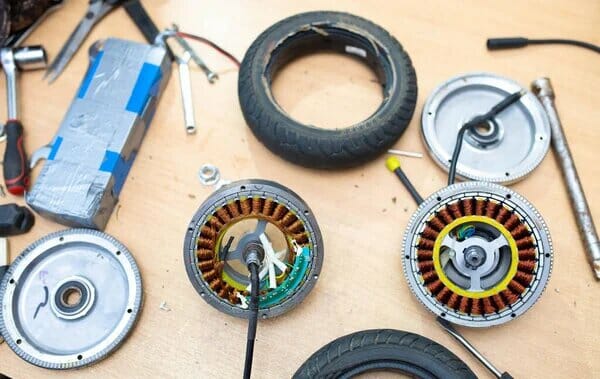



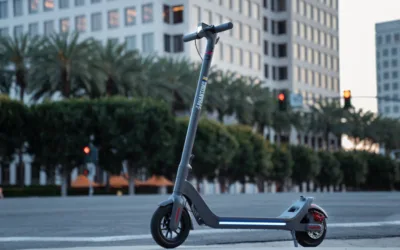


0 Comments